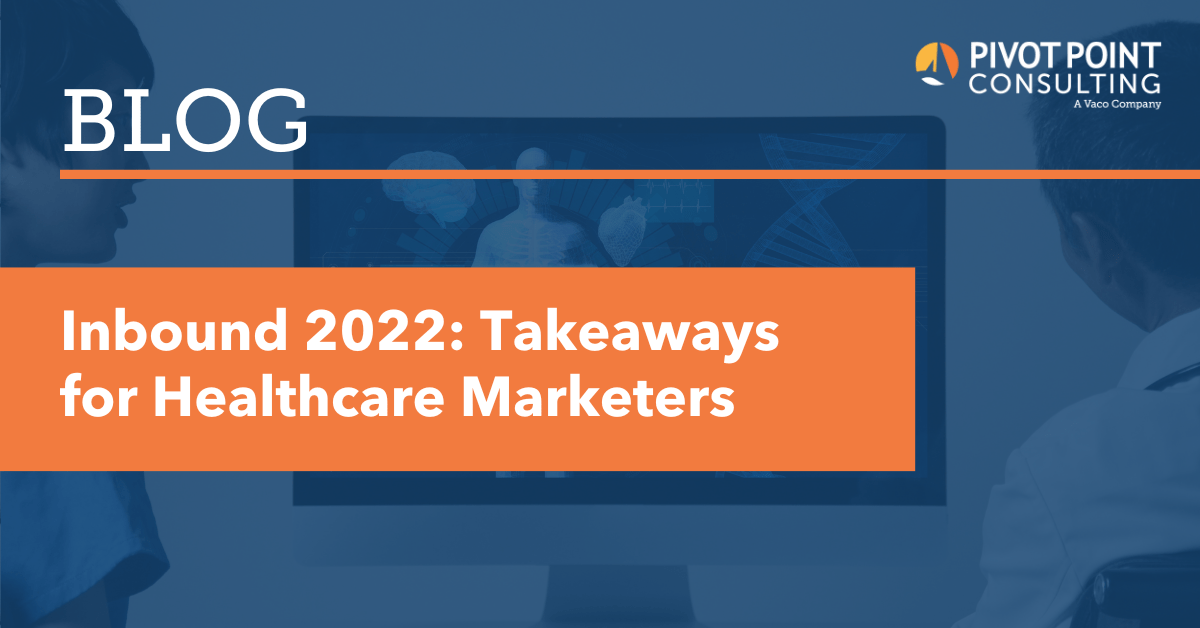Healthcare and digital marketing share many job-related duties, so it’s important for both to remain abreast of changes in the industry; as new trends or social phenomena occur frequently.
HubSpot recently held its Inbound 2022 conference, and a few key themes emerged on what healthcare marketers can focus on:
Connection Across Healthcare
“Embrace emotional connection.”
Consumers don’t just care about the solution to their problem; they also want to see the human behind the brand. Roughly 64% of customers with a high personal and emotional connection to a brand are willing to pay more. This means they believe that brand is worth the higher cost; that trust has been built between the customer and the brand. Think about your organization for a moment. How often do you take into consideration the human impact when it comes to a patient’s care? This isn’t just for patient relations to worry about. Developing a strong relationship with each patient needs to be a priority for everyone, from the OR to the billing department.
Communication
Be mindful when communicating, listen more than speak. Listen first, write down what’s important, and then respond—in that order, whether it’s with colleagues in your organization or with patients.
It’s not just how you communicate, it’s also the channels you use to communicate. A recent poll showed that 81 percent of customers prefer video over written content. In addition, consumers are feeling overloaded with digital communications. Consider prioritizing video content in marketing materials, and when providing patients with information. Make it short and to the point. For example, if a patient is diagnosed with multiple sclerosis (MS), rather than giving them a packet full of information, provide them with a QR code that links to videos of doctors who specialize in MS treatment explaining various treatment options, and other individuals living with MS. If they want more information, they can download it. This process can be used to train non-medical staff, and onboard new employees.
Digital Strategies and Technology
The average number of Software-as-a-Service (SaaS) tools a company has is 254. That doesn’t mean all these tools are used, nor should they be. There could be redundancies in terms of functionality, and some could have been forgotten. Rationalization of your healthcare organization’s software across each department is a necessity to keep data organized and consistent, and to reduce costs. For the public-facing departments like patient relations, running an annual review of each tool, what value it brings, and how often it’s used can ensure that the number of SaaS tools aren’t getting out of hand. It will also assist in streamlining your digital strategy.
There’s more to a digital strategy than basic email campaigns, social media, and website updates. Your marketing and communications teams already know this, but do the other teams? A digital strategy is a necessity now to stand out from the crowd, so provide helpful, informative content. When creating content, be certain that each piece provides a new perspective or piece of information that a patient might not know, as 71 percent of consumers believing most thought leadership is clutter.
Fostering and maintaining a relationship with patients through online platforms is also a crucial part of the strategy. The average length of a hospital stay in the US is 5.4 days. Those remaining 360 or so days can be used to develop a strong patient relationship through content that informs and engages, insightful thought leadership and digital initiatives that keep your healthcare organization top of mind.
Questions? Contact Jessica Day today or add her on LinkedIn.


